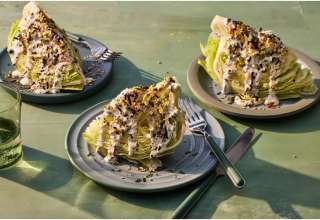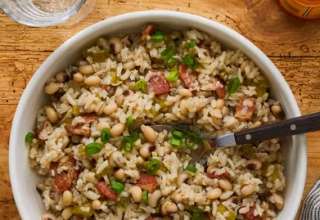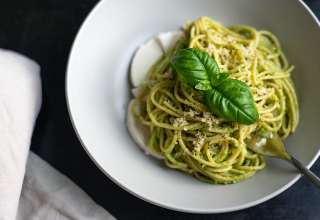I’m always anxious to devour Brussels sprouts in any way, shape and form: tenderly boiled al dente, followed with a drizzle of extra virgin olive oil and a dollop of goat cheese or butter, or perhaps a dash of Parmigiano Reggiano Cheese.
I’ve noticed that when the sprouts are crisscrossed on top with a knife, and boiled a tad too long, they become mushy, waterlogged and lose much of their flavor.
So, the recipe can be repeated by baking in the oven. I know it’s popular to deep fry Brussels sprouts, but the texture can be a bit too crisp, and overwhelm the sprouts’ natural flavor – and there’s a chance that your heart will no longer love you in the later years of your life.
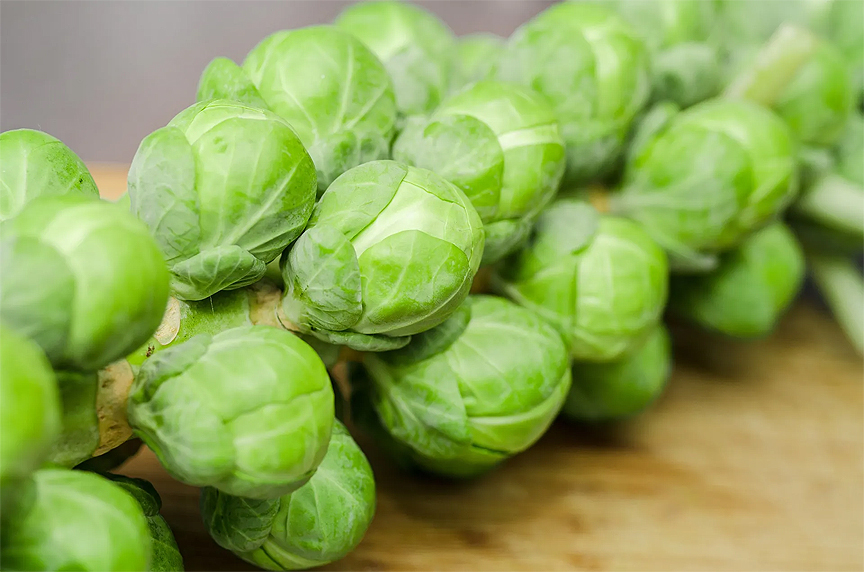
Before I write Michael Solomonov’s recipe, here’s a few things that I already knew, and many things I just learned by reading about this delightful sprout:
The Brussels sprout is a member of the Gemmifera, a cultivar group of the same species as broccoli, cabbage, collard greens, kale, and kohlrabi; grown for its edible buds. The leaf vegetables are typically 1.5–4 centimetres (1⁄2–1+1⁄2 inches) in diameter and resemble miniature cabbages.
The forerunners to modern Brussels sprouts were first cultivated in Ancient Rome. Brussels sprouts as they are now known today were possibly grown as early as the 13th century in what is now Belgium. The first written reference dates to 1587. During the 16th century, they enjoyed a popularity in the southern Netherlands that eventually spread throughout the cooler parts of Northern Europe, reaching Britain by the 17th century.
Harvest season in temperate zones of the northern latitudes is September to March, making Brussels sprouts a traditional winter-stock vegetable. In the home garden, harvest can be delayed as quality does not suffer from freezing. Sprouts are considered to be sweetest after a frost.
In the 1990s, Dutch scientist Hans van Doorn identified the chemicals that make Brussels sprouts bitter: sinigrin and progoitrin. This enabled Dutch seed companies to cross-breed archived low-bitterness varieties with modern high-yield varieties, over time producing a significant increase in the popularity of the vegetable.
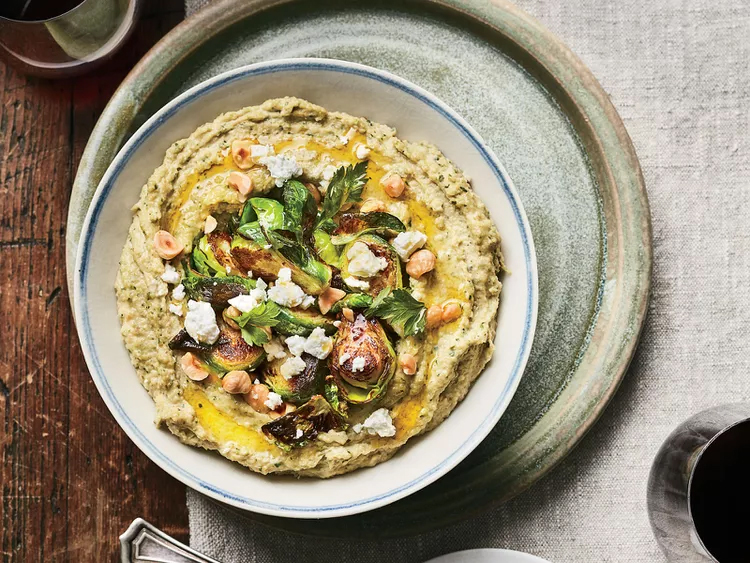
Brussels Sprouts Baba Ghanoush
Michael Solomonov, Food & Wine star chef at Zahav, serves this brilliant riff on Baba Ghanoush at his restaurant in Philadelphia, but it is easy enough to recreate at home. After a whirl in the food processor, Brussels sprouts and tahini come together to form a creamy dip. Michael serves it topped with more roasted Brussels sprouts and hazelnuts.
Total Time: 30 mins
Yield: 8
Ingredients:
- 1/2 pound Brussels sprouts, trimmed and halved lengthwise
- 1 tablespoon extra-virgin olive oil, plus more for drizzling
- 1 teaspoon kosher salt, divided, plus more to taste
- 1/2 cup hazelnuts
- 1 cup tahini (such as Soom)
- 1/4 cup fresh lemon juice (from 2 lemons)
- 1/2 teaspoon ground cumin
- 1 ice cube
- 1/2 cup cold water
- 1/4 cup chopped fresh flat-leaf parsley
- Preheat oven to 500°F. Toss together Brussels sprouts, oil, and 1/4 teaspoon salt on a large rimmed baking sheet. Spread in a single layer, and roast in preheated oven until tender and lightly charred, about 12 minutes. Transfer to a plate to cool. Reduce oven temperature to 300°F.
- Spread hazelnuts on a large rimmed baking sheet, and bake at 300°F until golden and skins wrinkle, about 8 minutes. Transfer to a clean kitchen towel, and rub off skins. Let stand until cool enough to handle; coarsely chop.
- Place tahini, lemon juice, cumin, ice cube, half of the cooled brussels sprouts, and remaining 3/4 teaspoon salt in a food processor. Process until ice melts and a chunky paste forms. With processor running, add 1/2 cup cold water in a slow, steady stream, processinguntil mixture is emulsified and resembles the texture of hummus. Season to taste with salt.
- To serve, spread tahini mixture on a platter, and top with remaining Brussels sprouts. Garnish with hazelnuts, chopped parsley, and a generous drizzle of olive oil.
With thanks as always to the innovative, Michael Solomonov, Food & Wine star chef at Zahav in Philadelphia.
